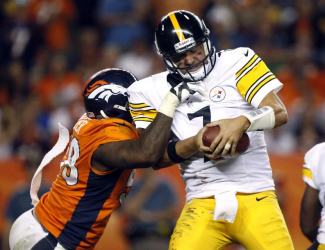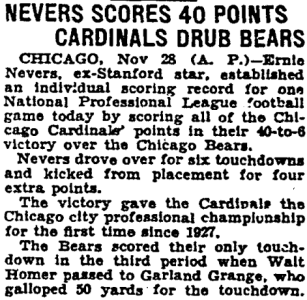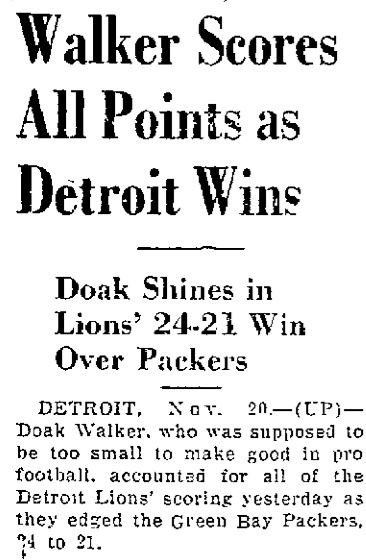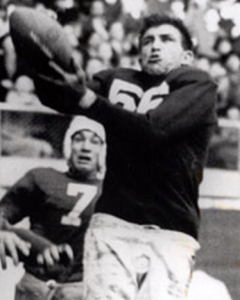In Sunday’s 27-0 blanking of the Bengals, the Colts had a 506-135 edge in yards — a difference of 371. Which raises the question: Is this at all close to the NFL record?
Answer: Not nearly. In fact, it’s not even within 200 (as you can see in the following chart).
BIGGEST YARDAGE DIFFERENTIAL IN A GAME SINCE 1940
| Date | Winner, Yards | Loser, Yards | Margin |
|---|---|---|---|
| 9-28-51 | Rams, 722 | Yanks, 111 | 611 |
| 11-11-62 | Packers, 628 | Eagles, 54 | 574 |
| 11-14-43 | Bears, 682 | Giants, 157 | 525 |
| 12-4-76 | Rams, 569 | Falcons, 81 | 488 |
| 11-4-79 | Rams, 475 | Seahawks, -7 | 482 |
| 11-13-66 | Rams, 572 | Giants, 103 | 469 |
| 11-6-88 | Vikings, 553 | Lions, 89 | 464 |
| 9-9-79 | Patriots, 597 | Jets, 134 | 463 |
| 12-14-47 | Redskins, 574 | Yanks, 112 | 462 |
| 12-13-53 | 49ers, 597 | Colts, 136 | 461 |
How are those for one-sided contests?
I actually covered one of them: the Patriots’ annihilation of the Jets in 1979. Final score: 56-3. (It looked like a touch football game, with the Jets secondary hopelessly chasing around Harold Jackson and Stanley Morgan.) Amazingly, the Jets won the rematch later in the season at Shea Stadium.
Several of these games are notable for other historical reasons. Namely:
● 1951 Rams-Yanks: The Rams’ Norm Van Brocklin threw for 554 yards. It’s still the single-game record.
● 1943 Bears-Giants: The Bears’ Sid Luckman became the first NFL quarterback to toss seven touchdown passes.
● 1979 Rams-Seahawks: The Seahawks’ yardage total of minus-7 is the lowest in NFL history. (Their one first down, meanwhile, is one shy of the mark).
Note that, in five instances, Hall of Fame quarterbacks were involved: Van Brocklin, Luckman, Bart Starr (1962 Packers-Eagles), Sammy Baugh (1947 Redskins-Yanks) and Y.A. Tittle (1953 49ers-Colts). A Hall of Fame QB was even involved on the losing end (Sonny Jurgensen in the Packers’ wipeout of the Eagles). Pat Haden, meanwhile, was the winning QB in two of the games (1976 Rams-Falcons, 1979 Rams-Seahawks).
Finally, the first three teams on the list — the ’51 Rams, ’43 Bears and ’62 Packers — went on to win the championship.
Interesting that the most recent of these games was played 26 years ago (1988 Vikings-Lions). What do you suppose the reason is? Parity? More merciful coaches? Or is it just easier to gain yards now, especially passing yards, whether you’re scoring points or not? (I vote for No. 3.)
Source: pro-football-reference.com




